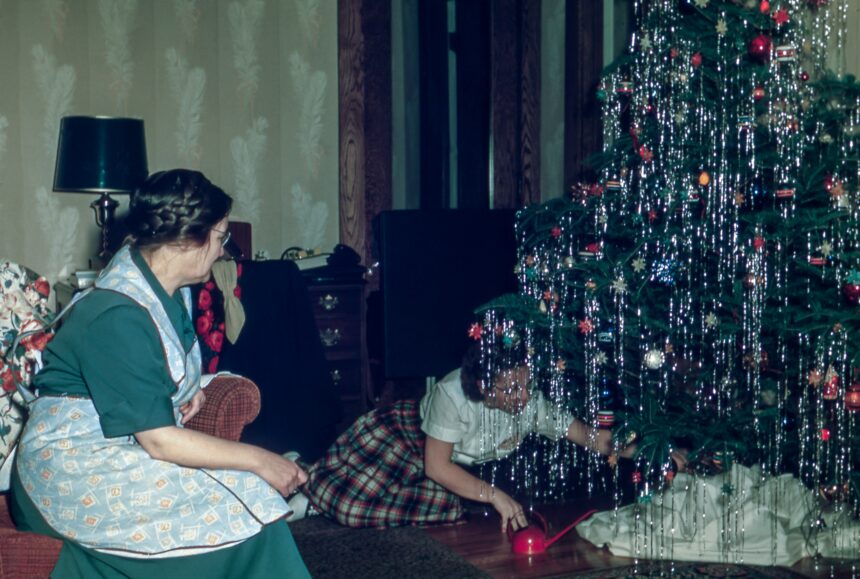Photo by Les Anderson on Unsplash
The Christmas season is full of old and new traditions, festive music, movies, and books, plus loads of delicious treats. Traditions surrounding Christmas have evolved greatly throughout the years and are just as diverse depending on the ethnicity/background of the family you spend the holidays with. As my family is more German/Irish/Scottish, we participate in St. Nicholas Day and finding the pickle ornament, but every family has different traditions. Now, you may be wondering where I’m going with this introduction, and that is the pervasive issue of gender-based biases in Christmas customs.
The first concept is the big man himself, Santa Claus. Mr. Claus is traditionally depicted as an overweight white man in a red suit and a long white beard. In not-so-recent years, the image of Santa has also expanded in races, with Black Santa being the most popular amongst major retailers. While POC Santas are 100% crucial to children’s representation, Santa continues to remain a man. I have yet to see a single Santa that is depicted as a woman, only the occasional Mrs. Claus. While I haven’t seen a female Santa in stores, that doesn’t mean that stories and movies have kept the patriarchal Santa Claus role. In the 2019 Disney+ film, Noelle, Anna Kendrick does play one of the very first female representations of Santa Claus. I am sure there have been other depictions of Santa as a woman, but this was the first time I have seen this anti-sexist representation in media.
Following the patriarchal role of Santa Claus, are gender-segregated children’s toys. Toys have been separated into boys’ toys and girls’ toys for as long as toy stores have been around. Girls’ toys include things such as dolls, kitchen sets, and play school supplies, while boys’ toys include trucks, Legos, and Nerf guns. With this being said, gift-giving should follow some more gender-neutral guidelines because we aren’t in the 1950s and girls don’t need to learn from a young age how to cook and clean for their future husband and to care for a babydoll because society thinks all girls should have children once they’re married.
Next on my list are Christmas songs. Everyone has heard songs such as “It’s Beginning to Look a Lot Like Christmas” and “Santa Baby” on the radio and in the background of Christmas TV shows and movies, but the song I’m going to focus on in this section is “Baby It’s Cold Outside.” This song has earned the moniker of The Christmas Date rape Song and was recently revamped by John Legend and Kelly Clarkson to lyrics stating “your body, your choice,” and the man (Legend, in the case of this song) offering to call the woman (Clarkson) an Uber so that she can get home safely.
Going through other Christmas media that we consume, are Christmas TV advertisements. Most of these ads are sexist and promote traditional gender roles as to who is cleaning, cooking, and prepping for holiday celebrations. Another point that I’d like to make with Christmas ads is the amount of backlash LGBTQIA+ commercials have gotten. There have definitely been more queer advertisements in recent years, but this comes with ALOT of backlash and homophobic hatred.
Speaking of traditional gender norms around Christmas, the next topic I would like to discuss is female labor and gendered expectations in the preparation of holiday meals and celebrations. Growing up, my mother would transform my house into a winter wonderland on the night after Thanksgiving, just as Disney transforms overnight into its Christmas glory. My family would wake up on Black Friday and come downstairs to a fully decorated house that my mother would stay up all night decorating, and it was just something that grew into an expectation. My mom cooks all of the cookies, she decorates the house, and she cooks Christmas dinner because that’s how it has always been. In another tradition, my mother goes to my Aunt Nicole’s house with my Aunt Patty to stay up until 2 am baking anise cookies from their secret family recipe. No men in the family are invited, and even I wasn’t invited until this year (as a 20-year-old adult). The gender roles of the women of the family (specifically the mother) cooking, decorating, baking, and cleaning, versus the men (specifically the father) holding the trash bag for wrapping paper on Christmas morning, are some gender norms that need to be questioned. Why does the father always clean up the wrapping paper, and why does the mother do all the other preparations? This is something that was socially learned and with questioning, we can work to break these norms and become equal in holiday preparation labor.
Lastly, the gender-based conversations that happen at holiday celebrations. Conversations for women include questions such as “Are you dating anyone?” and “When do you plan on having kids?” while men are asked questions based on their work and their passions. Women should also be asked about their work and their passions because they aren’t just beings with the purpose of getting married and having children. Making these conversations as inclusive as possible allows families to fully understand each other as human beings, and allows them to bond in ways that stray away from gender roles and norms.
All in all, let’s commit to rewriting the script, embracing diverse Santas, gender-neutral gifts, and shared responsibilities. As we gather with loved ones, let inclusive conversations become the norm, breaking free from outdated gender roles. This Christmas, let’s celebrate a season where the true magic lies in fostering equality, understanding, and connections that transcend societal expectations.


Leave a Reply